Cranach painted this altarpiece shortly after being appointed a court painter to Elector Friedrich the Wise in 1505. It probably hung in the Castle Church in Wittenberg, which also served the university after its foundation in 1502. St Catherine of Alexandria is the patron of educational institutions. According to the “Golden Legend”, she converted 50 philosophers to Christianity. She was therefore condemned to be put to death on a breaking wheel, but through God’s help the wheel shattered.
Further Media
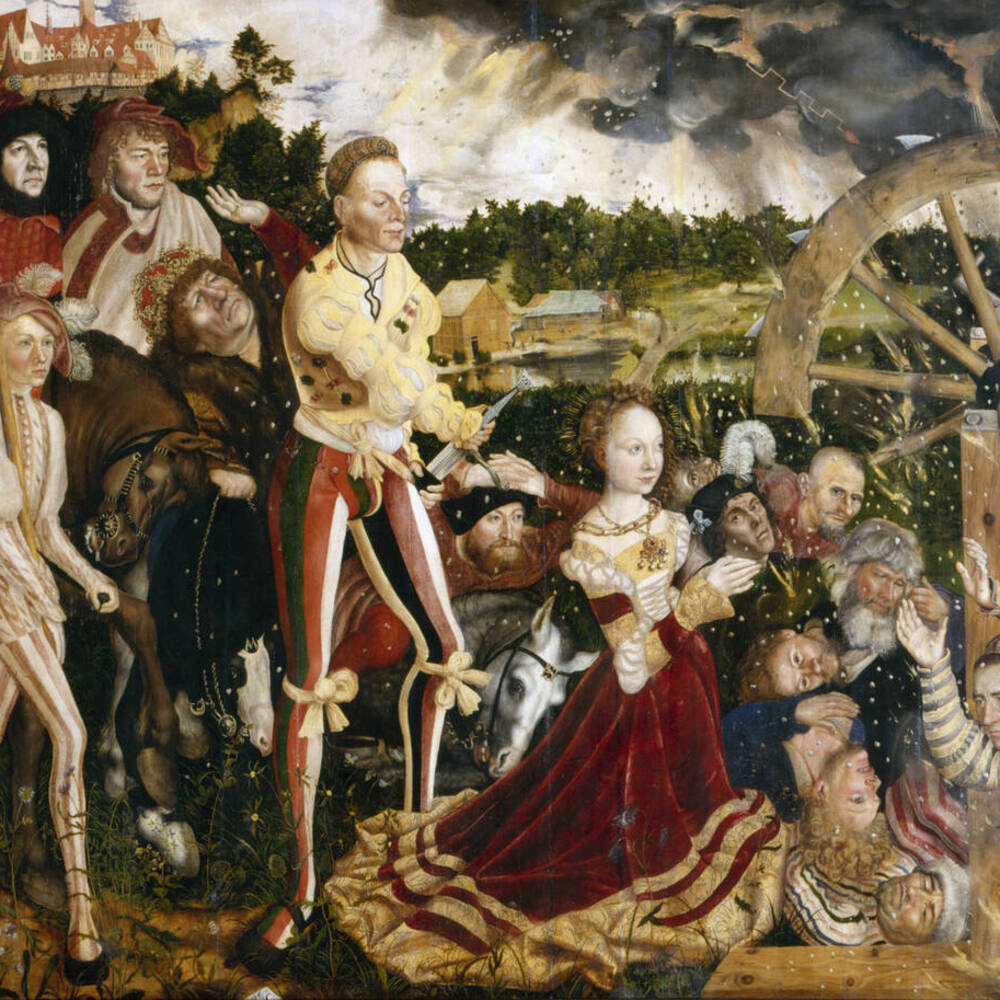


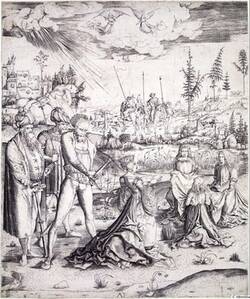
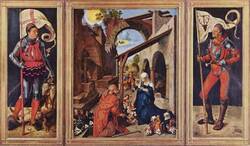
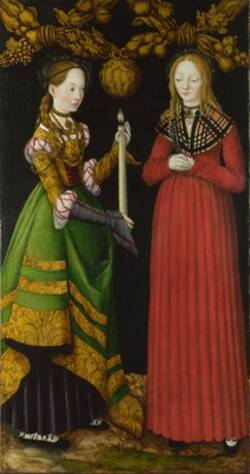
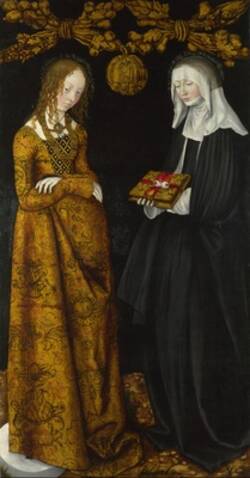
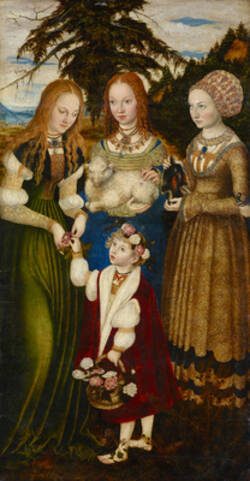

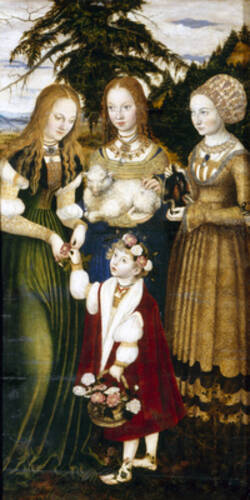
Some years later, Friedrich the Wise, who commissioned this altarpiece from Cranach, was to go down in history as a supporter of Martin Luther and the Protestant Reformation. But in 1506, when this work was painted, that all lay in the future. This winged altarpiece testifies to the late medieval veneration of saints and reliquary cult being still very much alive. Here, Cranach presents seven female saints who suffered, were tortured and martyred for their Christian faith. He shows them wearing courtly robes painted in rich detail – their external beauty reflecting their inner purity and greatness of spirit. With their resolute belief in Christian salvation, they were role models for the faithful. The figures on the left wing are Dorothea, Agnes and Cunegonde, with Barbara, Ursula, and Margaret on the right-hand wing. Each of the saints has their attribute with them – Margaret of Antioch, for example, is accompanied by the dragon that appeared to her in prison and she overcame by the sign of the cross.
On the central panel, Cranach has masterfully orchestrated the martyrdom of Saint Catherine of Alexandria. His contemporaries would have been familiar with the backstory: fifty scholars were sent to persuade Catherine, a well-educated king’s daughter, to renounce her Christian faith, but she had the better arguments, and instead converted the scholars to Christianity. When her father the king sentenced Catherine to death, she merely smiled, and folded her hands together in prayer. In response, God sent a sign with flashes of lightening from dark clouds and a storm where it rained stones. In the resulting chaos, the wheel for Catherine’s execution was left smashed and broken. But Catherine was still executed – the executioner is already standing behind her.
“The composition shows – admittedly appropriate for the subject – a jumble of horses, figures and numerous heads, while their corresponding bodies appear to be entwined in knot-like bundles.”
Judging from this comment in 1860, Cranach’s Altar of Saint Catherine amazed viewers then just as much as it does today. On the central panel, numerous sections seem to be bold montages of heads and bodies, irrespective of perspective and anatomy. In fact, for this composition Cranach may well have taken a whole series of drawings or prints as his model or as an inspiration.
For example, the executioner figure as well as the central panel scene in its entirety is indebted to an engraving by the Master MZ from 1500 – and you can see the print on your device.
The executioner’s head, in turn, is very similar to Albrecht Dürer’s painting of Saint Eustace on the Paumgartner altarpiece. You can also see that image on your device.
Last but not least, Cranach may well have made sketches of people he dealt with on a daily basis, and then also taken those as a source of material for this painting. For instance, commentators have often noted the surprising similarity between the bearded face at the top left under the castle with Cranach’s later portraits of Friedrich the Wise. The adjacent face might well be Friedrich’s brother, Johann the Steadfast.
As fascinating as we may find this altarpiece, in the years after the Protestant Reformation in Saxony, Cranach’s Altar of Saint Catherine with its collection of saints seemed out of touch with the times. By the end of the sixteenth century at the latest, it was removed from Wittenberg palace church and taken to the palace in Torgau. Subsequently, it entered the Dresden art collection, but was soon to be sold. Since the altar wings were doubled sided, painted both back and front, the decorated outer faces of each wing were separated from the inner faces. This created four one-sided panels, intended to optimise the revenue when sold. In the late eighteenth century, the inner face of the left wing was auctioned, along with both outer faces of the wings. However, they only fetched a modest price.
The inner face of the right wing and the central panel remained in Dresden. At that time, no one knew who the artist was. In 1905, they were again ascribed to Lucas Cranach the Elder, an ascription still valid today.
The auctioned outer faces of the wings changed hands numerous times until finally they were bought by London’s National Gallery, where they still are today. You can see an image of them on your device.
The inner face of the left wing could be re-acquired in 1996 for the Staatliche Kunstsammlungen in Dresden.
- Location & Dating
- 1506
- Material & Technique
- Oil on limewood panel
- Dimenions
- 121,4 x 64 cm (linker Seitenflügel, Innenseite)
- Museum
- Gemäldegalerie Alte Meister
- Inventory number
- Gal.-Nr. 1906 BB